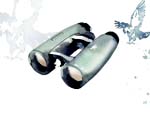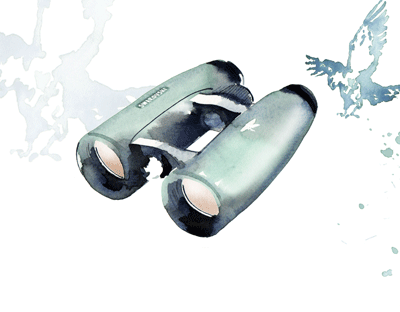Icons of style for him: Swarovski binoculars
Nick Foulkes admires the technology behind the ultimate binoculars


The Swarovski story begins in the twilight years of the Austro-Hungarian empire, when a young Bohemian glass grinder, Daniel Swarovski, devised a machine for cutting crystal for use in jewellery. Settling in the Tyrol, his son, Wilhelm, developed an interest in astronomy, and, in 1949, set up Swarovski Optik.
In an area of Europe famed for its hunting, Wilhelm began to produce highly specialised, observatory-grade optical products, which are now venerated by those who watch or stalk wildlife. In 1999, Swarovski launched the EL Binocular,perhaps the most sought-after of them all. Now, I ought to admit that I've never been one for crawling through damp heather with only the company of a taciturn Scotsman to take my mind off the gnawing cold, but I understand from those who do that these, and their rifle-scope cousins, are the very best there are.
My own experience, in the rather less rustic surroundings of Shepherd's Bush, achieved remarkable results. I won't pretend to know anything about optical science beyond what I've forgotten from my O-level physics, but the world as viewed through these tactile tubes assumes a sharpness and clarity that's astonishing. I wasn't so much counting the petals on my neighbour's roses as the legs of the greenfly resting on them. I exaggerate slightly, but not much.

It's not just the insides of these glasses that that are so effective-the exterior boasts cunning little ergonomic refinements, too. The thumb-sized declivity just below the bridge and the adjustable eyecups are small things that pay great dividends in comfort. The EL Binocular is the sort of product that I like because it's the logical evolution of what has gone before, and is part of an incremental process of refinement that seems never to come to an end.
This culture of perpetual improvement has recently given birth to a range-finding system, which, coupled with some sort of downloadable app, will enable the sporting Swarovski user to shoot uphill, downhill and more or less around corners, too, bringing stalking a little closer to the stuff of Ian Fleming's Q Department, as opposed to John Buchan's John Macnab.
* Subscribe to Country Life and pay just £29.99
Sign up for the Country Life Newsletter
Exquisite houses, the beauty of Nature, and how to get the most from your life, straight to your inbox.
Country Life is unlike any other magazine: the only glossy weekly on the newsstand and the only magazine that has been guest-edited by HRH The King not once, but twice. It is a celebration of modern rural life and all its diverse joys and pleasures — that was first published in Queen Victoria's Diamond Jubilee year. Our eclectic mixture of witty and informative content — from the most up-to-date property news and commentary and a coveted glimpse inside some of the UK's best houses and gardens, to gardening, the arts and interior design, written by experts in their field — still cannot be found in print or online, anywhere else.
-
 380 acres and 90 bedrooms on the £25m private island being sold by one of Britain's top music producers
380 acres and 90 bedrooms on the £25m private island being sold by one of Britain's top music producersStormzy, Rihanna and the Rolling Stones are just a part of the story at Osea Island, a dot on the map in the seas off Essex.
By Lotte Brundle
-
 'A delicious chance to step back in time and bask in the best of Britain': An insider's guide to The Season
'A delicious chance to step back in time and bask in the best of Britain': An insider's guide to The SeasonHere's how to navigate this summer's top events in style, from those who know best.
By Madeleine Silver